Efforts of the Hungarian Women's Movements to Reduce Woman and Child Trade at the Beginning of the 20th Century
DOI:
https://doi.org/10.15170/DIKE.2018.02.02.06Keywords:
female rights, servants, prostitution, woman trade, women's movementsAbstract
By the middle of the 19th century, the social conflicts related to women’s status became intense since female rights remained unsettled. Concomitant phenomena, such as the hopeless situation of the servants and the phenomenon of prostitution increased to an alarming extent. Although, people already realized in the 18th Century that venereal diseases affected the health negatively, the number of the prostitutes increased significantly in the second part of the 19th Century. In spite of the fact that the regulation concerning the subject was prohibited early in the 19th Century, by the end of the Century, a whole industry developed around it. Not subject to question that white slave trade was the most dangerous crime among the ones linked with prostitution. Until 1908, the Hungarian Criminal Code did not order to punish this act at all and harlots were excluded from the protection provided by criminal law even after the modification of the law in 1908, because according to the actual public opinion, in the case of harlots, there were no values to defend. In the 20th Century, both women activists and the members of the International Agreement signed in Paris in 1910 were working hard to find a solution for the problem. It seems that the actual political power did not make any real efforts to change the situation and it stayed the same until the end of the studied era.



